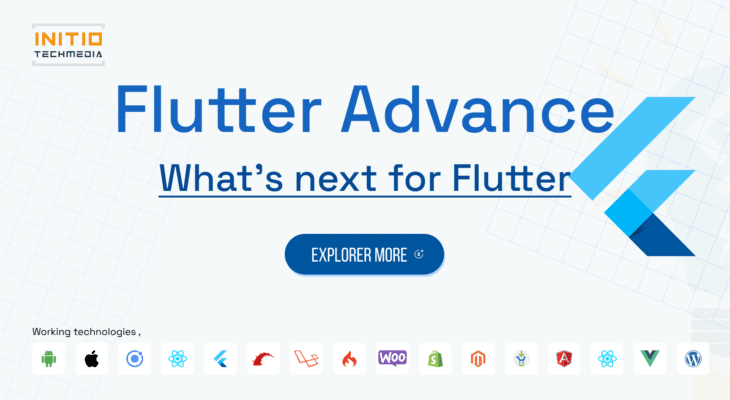Leading Mobile & web Development company which is providing Ready to publish apps & on demands application in Global Bussiness.
- 908, B Square 2, Ambli Rd, near Hotel Double tree Hilton, Vikram NagarAhmedabad-380054, Gujarat, India
- (+91) 8758432204Give us a call
- contact@initiotechmedia.com24/7 online support

What’s next for Flutter
- payal patel
- March 24, 2023
- 0
Flutter is a rapidly-evolving technology, and there are many exciting developments on the horizon. Here are some possibilities for what’s next for Flutter:
Continued growth and adoption: Flutter has already gained a large and active community of developers, but there’s still room for growth. As Flutter continues to mature and gain new features and capabilities, it’s likely that even more developers and organizations will adopt it for their app development needs.
Improved support for web and desktop: Flutter has made great strides in providing support for web and desktop platforms, but there’s still room for improvement. It’s likely that future releases of Flutter will continue to enhance support for these platforms, making it even easier to create high-quality apps that run seamlessly across multiple devices.
Integration with new technologies: Flutter has already shown a willingness to integrate with new technologies, such as AR/VR and machine learning. It’s likely that Flutter will continue to explore new ways to integrate with emerging technologies, making it even more versatile and useful for a wide range of applications.
More customizable widgets and APIs: Flutter’s rich set of customizable widgets and APIs is already a major selling point for the framework. It’s likely that future releases of Flutter will introduce even more widgets and APIs, making it even easier to create complex, interactive user interfaces.
Further performance optimizations: Flutter is already known for its fast performance, but there’s always room for improvement. Future releases of Flutter are likely to introduce further optimizations to improve app start-up times, reduce memory usage, and improve rendering performance.
Overall, the future looks bright for Flutter, and it’s likely that the framework will continue to evolve and improve in exciting ways. Developers can stay up-to-date with the latest developments by following the official Flutter website, the Flutter GitHub repository, and other official Google channels.
Breakthrough graphics performance:
Flutter is already known for its fast performance, but there’s always room for improvement. One potential breakthrough in graphics performance that could be coming to Flutter is the integration of Vulkan, a high-performance 3D graphics API.
Vulkan is designed to take full advantage of modern graphics hardware, allowing for high-performance rendering of complex 3D scenes. By integrating Vulkan into Flutter, developers would be able to create even more sophisticated and visually impressive apps with fast and smooth performance.
Another potential breakthrough in graphics performance for Flutter is the use of hardware acceleration for 2D graphics. By leveraging the GPU for 2D rendering, Flutter could achieve even faster and smoother performance, particularly on devices with high-resolution displays or high refresh rates.
In addition to these hardware-level improvements, Flutter is also likely to continue to evolve its software-level graphics capabilities. For example, future releases of Flutter could introduce new rendering techniques or optimizations that improve performance and reduce memory usage.
Overall, there are many exciting possibilities for breakthroughs in graphics performance for Flutter, and it’s likely that the framework will continue to push the boundaries of what’s possible in terms of visual quality and performance. Developers can stay up-to-date with the latest developments by following the official Flutter website, the Flutter GitHub repository, and other official Google channels.
WhatsApp us

